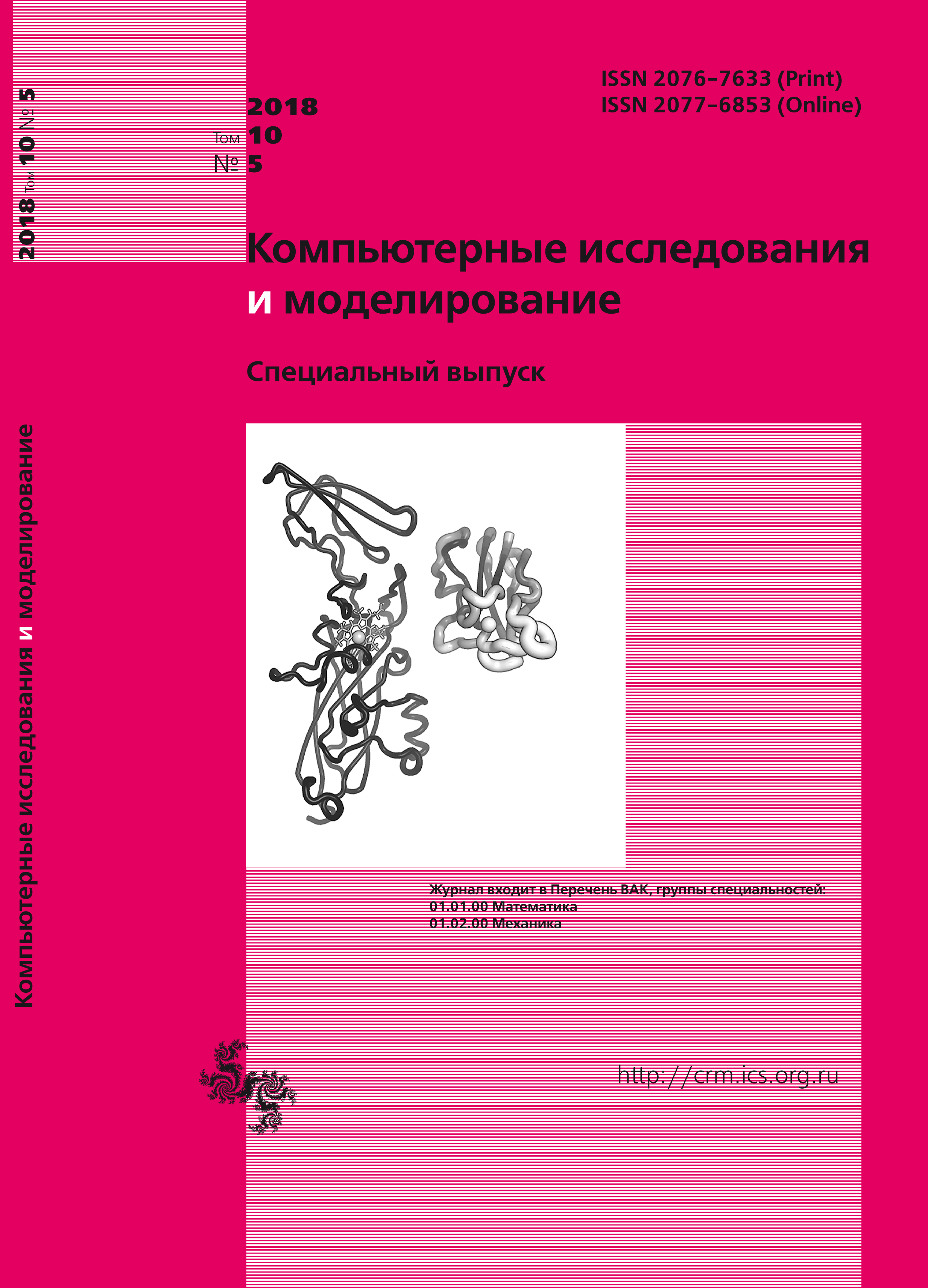All issues
- 2025 Vol. 17
- 2024 Vol. 16
- 2023 Vol. 15
- 2022 Vol. 14
- 2021 Vol. 13
- 2020 Vol. 12
- 2019 Vol. 11
- 2018 Vol. 10
- 2017 Vol. 9
- 2016 Vol. 8
- 2015 Vol. 7
- 2014 Vol. 6
- 2013 Vol. 5
- 2012 Vol. 4
- 2011 Vol. 3
- 2010 Vol. 2
- 2009 Vol. 1
Parallel implementation of the grid-characteristic method in the case of explicit contact boundaries
We consider an application of the Message Passing Interface (MPI) technology for parallelization of the program code which solves equation of the linear elasticity theory. The solution of this equation describes the propagation of elastic waves in demormable rigid bodies. The solution of such direct problem of seismic wave propagation is of interest in seismics and geophysics. Our implementation of solver uses grid-characteristic method to make simulations. We consider technique to reduce time of communication between MPI processes during the simulation. This is important when it is necessary to conduct modeling in complex problem formulations, and still maintain the high level of parallelism effectiveness, even when thousands of processes are used. A solution of the problem of effective communication is extremely important when several computational grids with arbirtrary geometry of contacts between them are used in the calculation. The complexity of this task increases if an independent distribution of the grid nodes between processes is allowed. In this paper, a generalized approach is developed for processing contact conditions in terms of nodes reinterpolation from a given section of one grid to a certain area of the second grid. An efficient way of parallelization and establishing effective interprocess communications is proposed. For provided example problems we provide wave fileds and seismograms for both 2D and 3D formulations. It is shown that the algorithm can be realized both on Cartesian and on structured (curvilinear) computational grids. The considered statements demonstrate the possibility of carrying out calculations taking into account the surface topographies and curvilinear geometry of curvilinear contacts between the geological layers. Application of curvilinear grids allows to obtain more accurate results than when calculating only using Cartesian grids. The resulting parallelization efficiency is almost 100% up to 4096 processes (we used 128 processes as a basis to find efficiency). With number of processes larger than 4096, an expected gradual decrease in efficiency is observed. The rate of decline is not great, so at 16384 processes the parallelization efficiency remains at 80%.
Copyright © 2018 Ivanov A.M., Khokhlov N.I.
Views (last year): 18.Indexed in Scopus
Full-text version of the journal is also available on the web site of the scientific electronic library eLIBRARY.RU
The journal is included in the Russian Science Citation Index
The journal is included in the RSCI
International Interdisciplinary Conference "Mathematics. Computing. Education"







